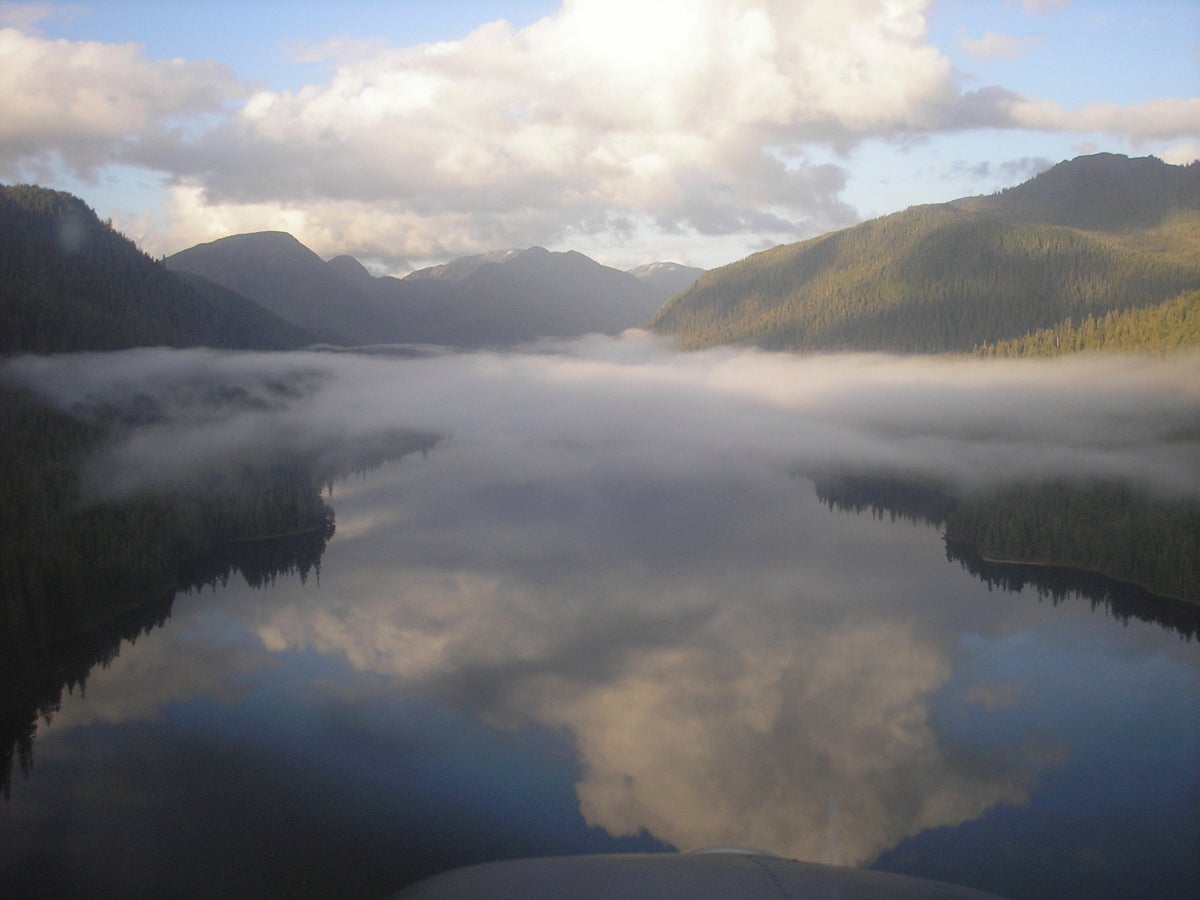Earthjustice stands with western Alaska tribes and families after severe storms devastated entire communities, displacing more than 1,000 residents just before winter. Learn more and how you can help.
Conservation Groups: Massive Big Thorne Timber Sale Deals a Severe Blow to the Tongass, Taxpayers
Largest old-growth timber sale in decades would destroy critical wildlife habitat, threaten southeast Alaska economy
Contact
The U.S. Forest Service has announced its decision to approve the Big Thorne timber sale, the largest industrial clear-cutting project in Alaska’s Tongass National Forest since the pulp mill era. Big Thorne would put more than 120 million board feet of old-growth timber on the chopping block. Allowing such sales to continue will not only accelerate the decimation of old-growth in the Tongass and greatly increase the expanse of degraded wildlife habitat, but it could also lead to an endangered species listing for the Alexander Archipelago wolf, the first ever listing of wildlife species in the Tongass under the Endangered Species Act.
More than half of the Tongass’ largest old-growth giants have already been cut. In 2010, Agriculture Secretary Tom Vilsack announced an agency goal of quickly ending industrial-scale old-growth logging in the Tongass, yet the Forest Service recently proposed another 10–15 years of clear-cutting these ancient trees. Massive timber sales like Big Thorne wholly contradict the Forest Service’s stated goal of rapidly transitioning the Tongass away from large scale old-growth logging to more sustainable management based on restoration, recreation, fishing and tourism.
In addition, such sales are costing taxpayers hundreds of millions of dollars. The Forest Service has estimated that Big Thorne will cost taxpayers more than $13 million dollars—yet based on actual Tongass timber program costs versus timber logged during the past few years, Big Thorne alone could cost more than $102 million. In fact, tens of millions of hard-earned taxpayer dollars continue to flow into the Tongass every year, subsidizing the industrial-scale clear-cutting of our largest national forest. This taxpayer giveaway continues at the expense of the region’s top industries, as fishing and tourism are the largest sources of private-sector jobs in southeast Alaska. These industries support 7,200 and 10,000 jobs respectively and pump approximately $1 billion apiece into the regional economy each year.
The following are statements from conservation groups:
“The Forest Service’s promise to end old-growth logging in the Tongass rings much more hollow today in light of this announcement. The decision to move forward with Big Thorne raises sobering questions about the agency’s commitment to a sustainable forest and to the region’s vital fishing and tourism industries. We’re talking about the largest Tongass old-growth sale in decades that will cost taxpayers more than $102 million and hurt the region’s top economic drivers, and yet once again the Forest Service has elected to keep the status quo and support the timber industry to the detriment all others in southeast Alaska,” said Kristen Miller, Conservation Director at Alaska Wilderness League.
“Big Thorne is bad for birds, wildlife and hunters, plus the American public will get stuck paying the $100 million dollar cost of the sale. Meanwhile, the Forest Service doesn’t have enough to fund its work for the fishing and tourism industries that actually matter to the Southeast Alaska economy,” said Jim Adams, Policy Director of Audubon Alaska.
“The Forest Service’s approval of the largest, most aggressive timber sale in 20 years is contrary to its stated goal of ramping down old growth clear-cutting in the Tongass. We will not stand idly by while the Forest Service flouts essential safeguards for the Sitka black-tailed deer needed by local hunters and wolves,” said Tom Waldo, Senior Staff Attorney in the Juneau office of Earthjustice.
“This sale is truly a national disgrace. Massive, taxpayer-subsidized destruction of virgin rainforest owned by the public is something America can no longer afford or tolerate. It’s time the Forest Service managed the Tongass for the unique natural values treasured by local residents and visitors alike,” said Niel Lawrence, Senior Attorney at the Natural Resources Defense Council.
“Big Thorne is a big mistake,” said Malena Marvin with Southeast Alaska Conservation Council. “It’s time to re-tool Tongass timber management away from large, export-driven old-growth sales like Big Thorne to real community-scale forestry that maintains the remaining big-tree deer and wild salmon habitat so crucial to Alaskan families and Southeast Alaska’s $2 billion/year fishing and tourism industries.”
"The Forest Service should be acting to safeguard this amazing wild place for future generations, not selling it to the highest bidder. It's clear that the best path forward, for both the wildlife and people who depend on the Tongass, is to protect the rainforest and its old-growth trees. Yet the Forest Service has again chosen the wrong way," said Dan Ritzman, Alaska Program Director for Sierra Club's Our Wild America campaign.

Additional Resources
About Earthjustice
Earthjustice is the premier nonprofit environmental law organization. We wield the power of law and the strength of partnership to protect people's health, to preserve magnificent places and wildlife, to advance clean energy, and to combat climate change. We are here because the earth needs a good lawyer.